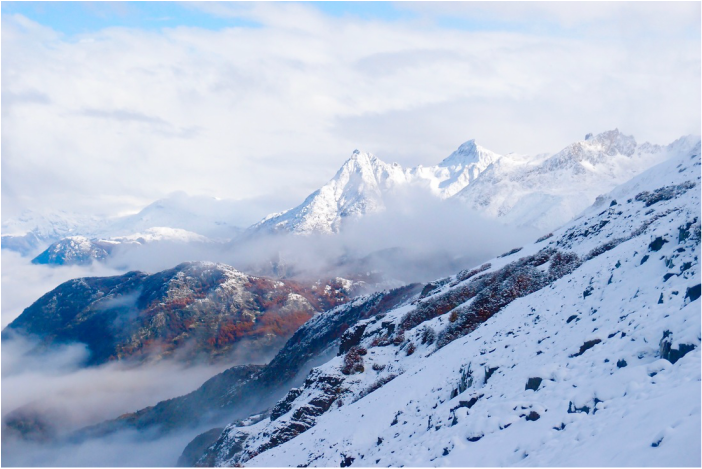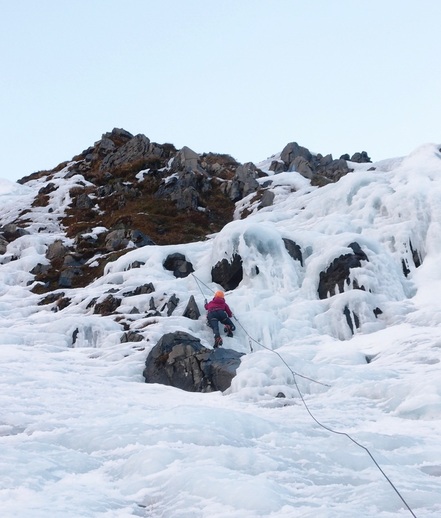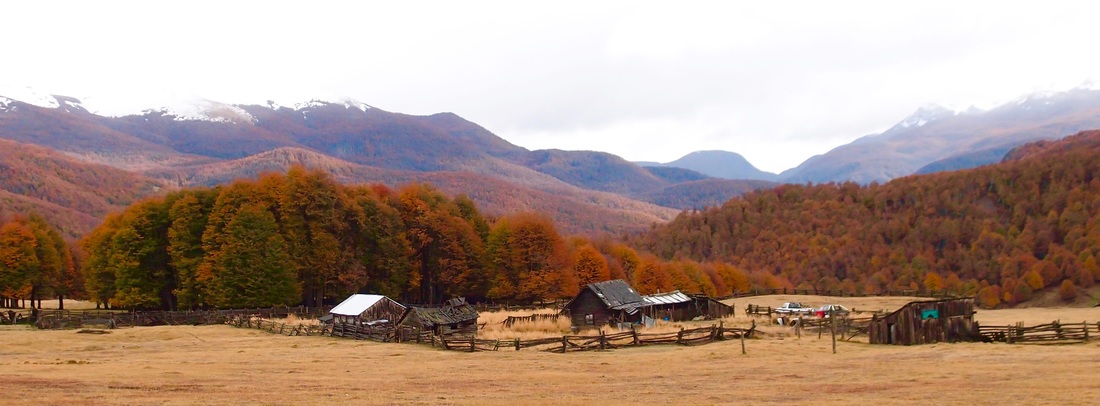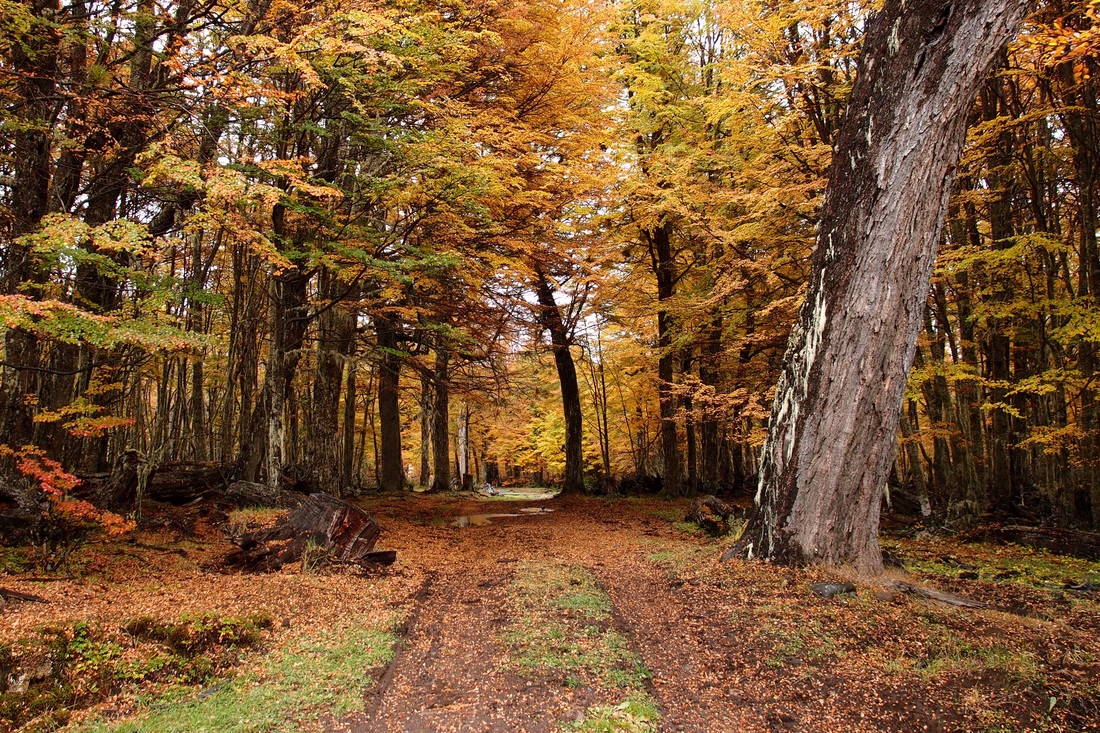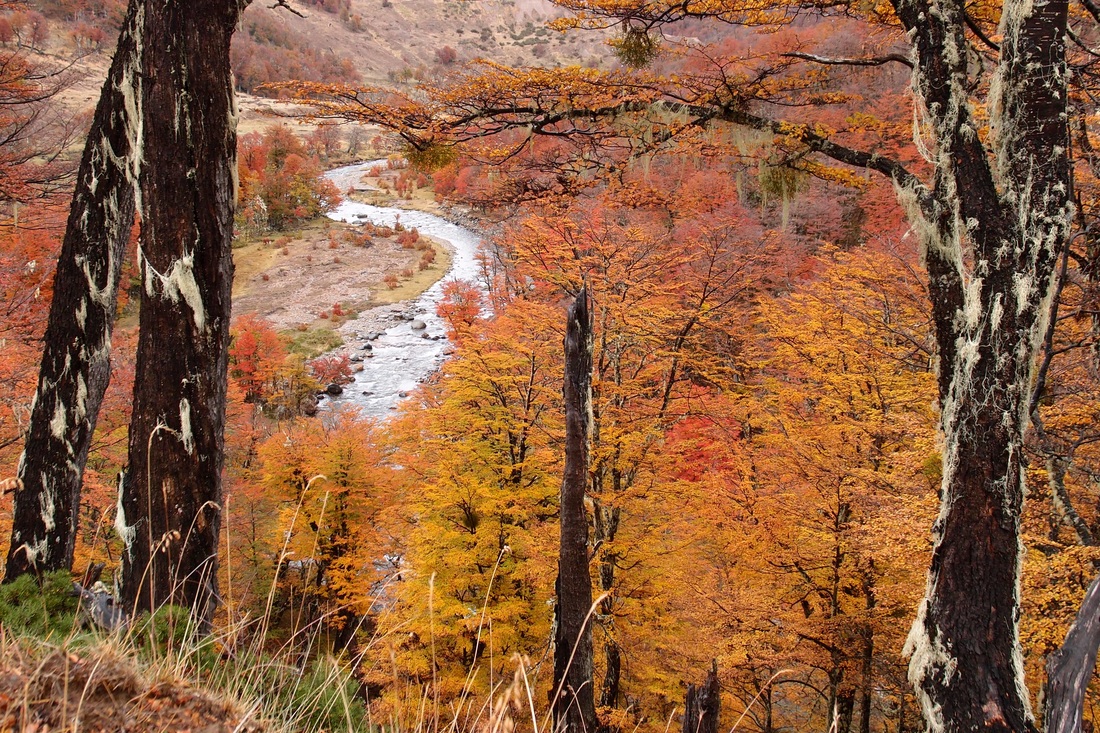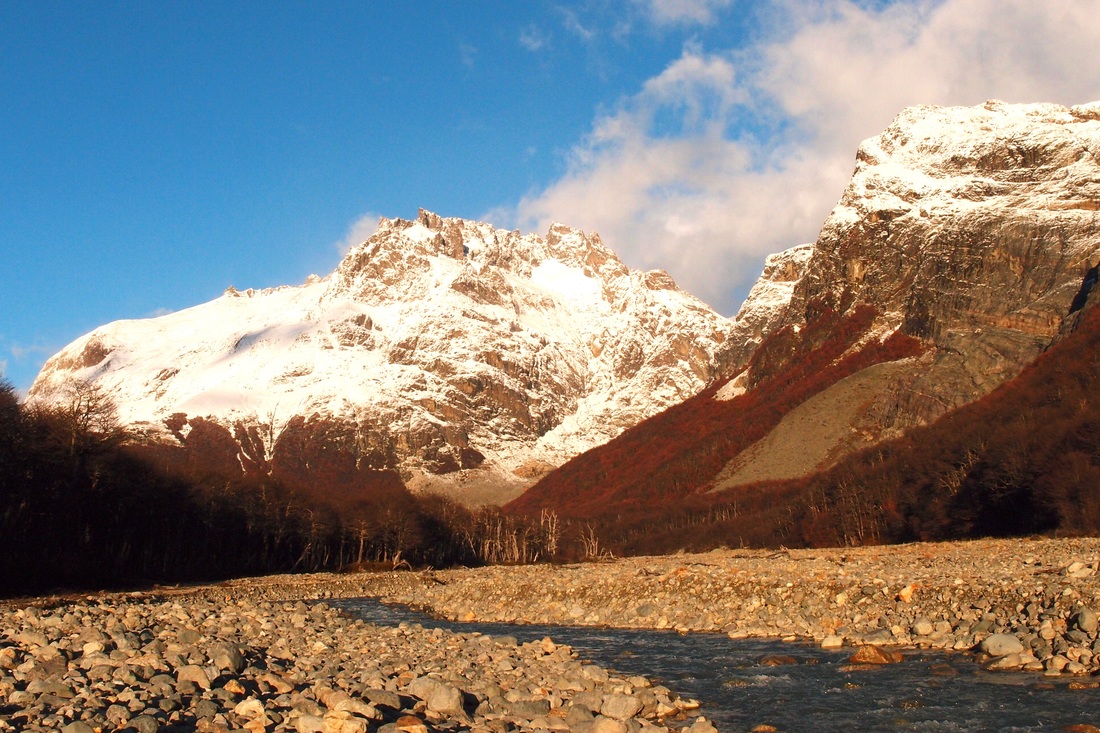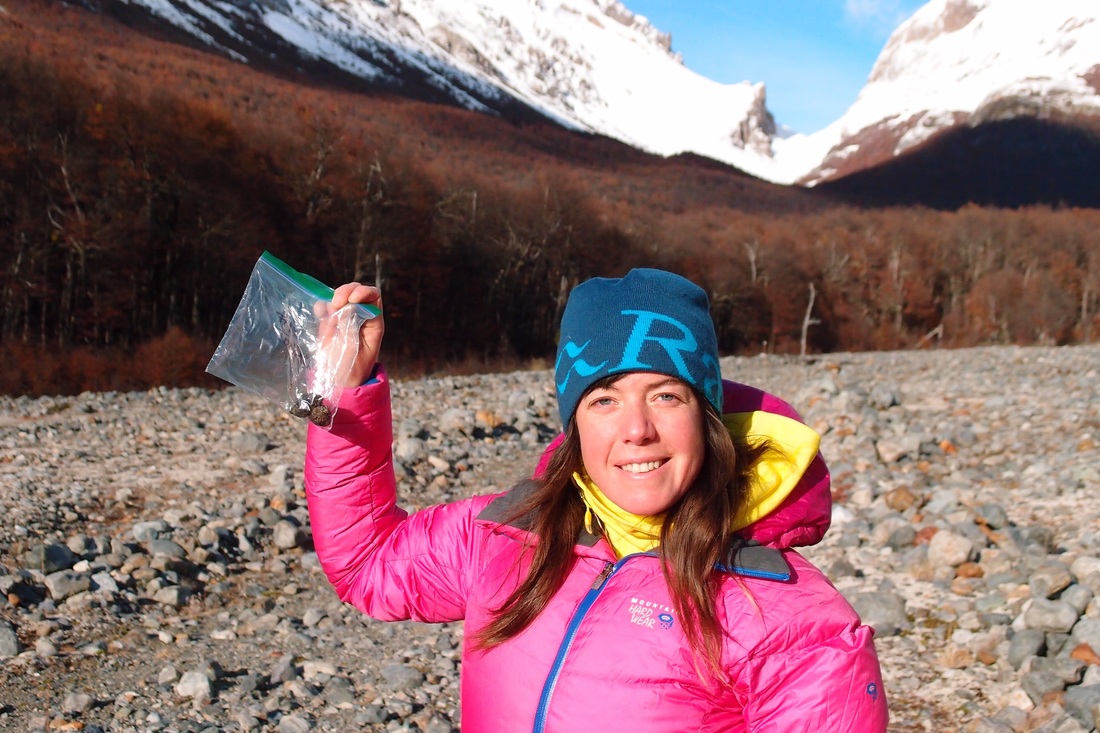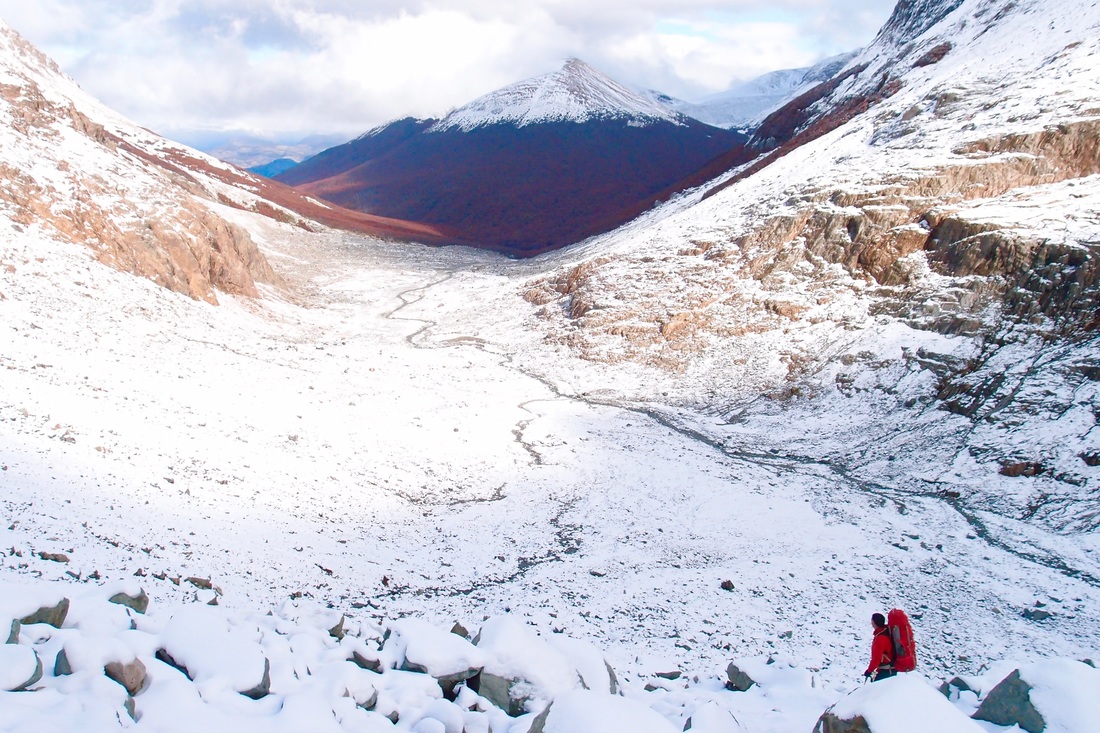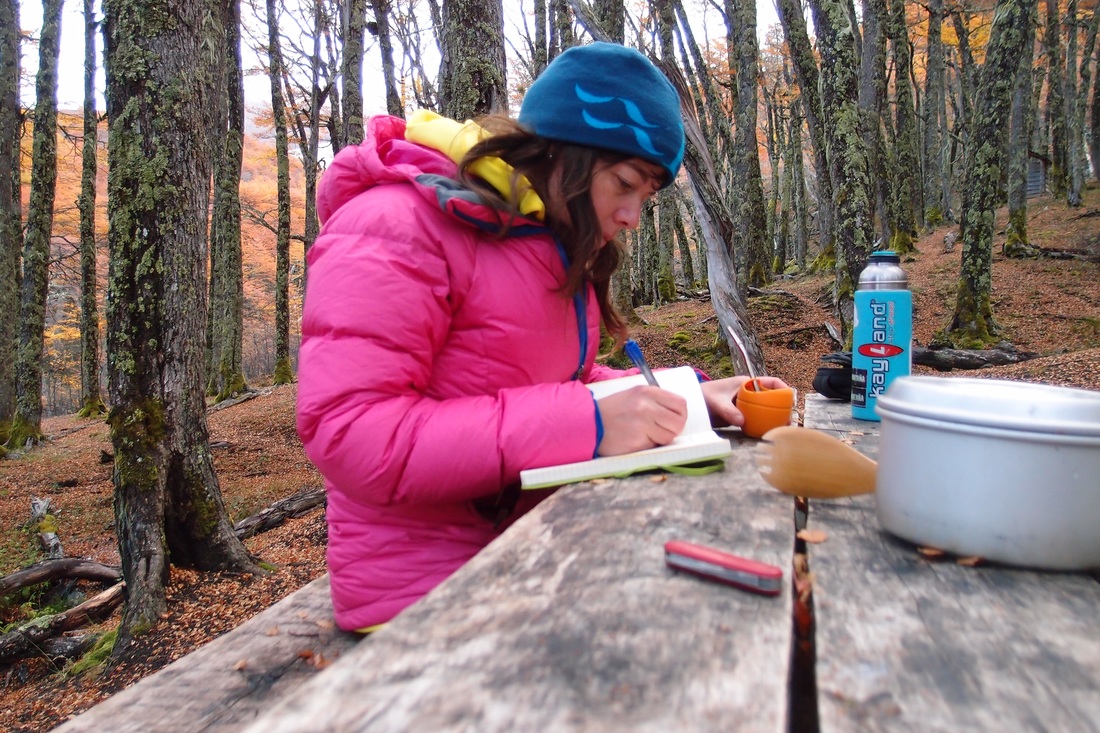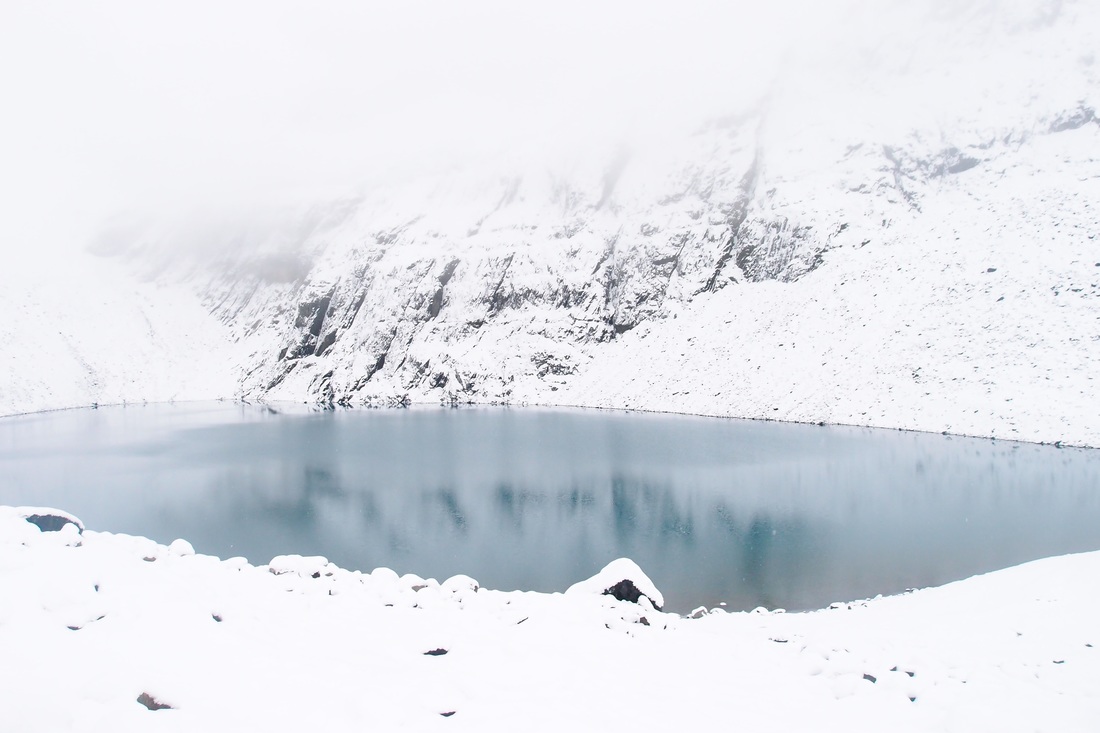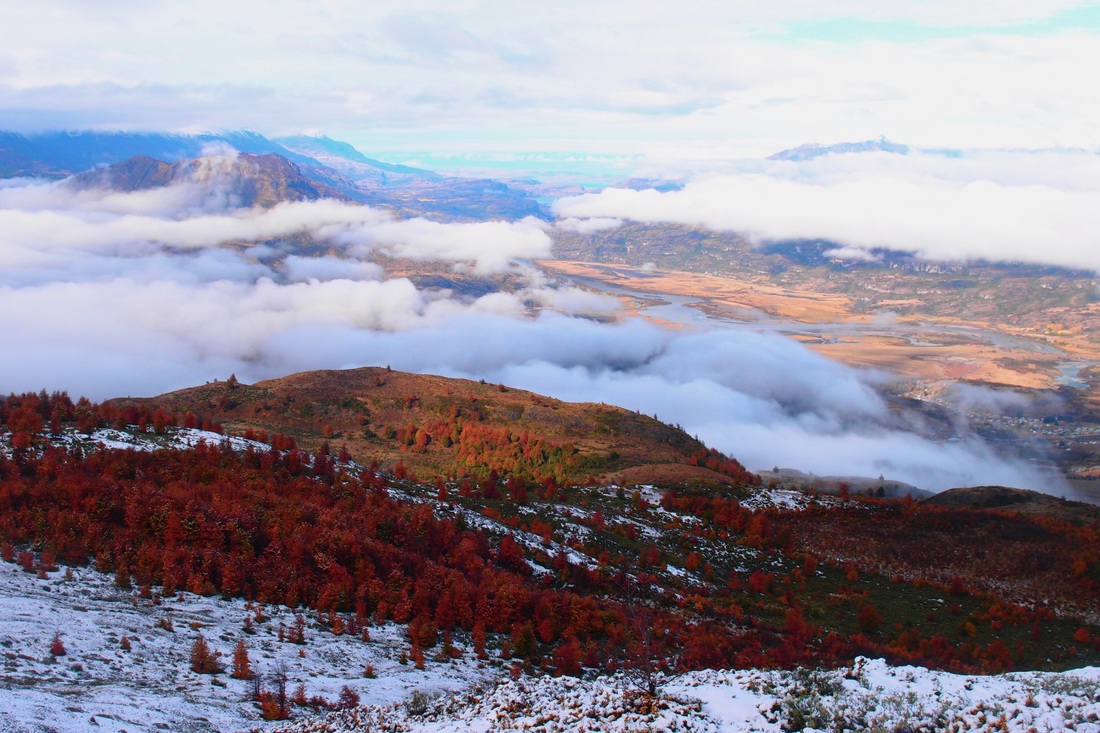By Karin Mullendorff
Scat Adventure Scientist
Scat Adventure Scientist
Two summers ago I came across these lands for the first time. Created in the 1970’s to protect valuable forest resources, the Cerro Castillo National Reserve encompasses 180,000 hectares in the Aysen district of Chilean Patagonia. Its rugged terrain tells us a story of natural, geological, and vulcanological changes that make this area an incredible land for trekkers, skiers, and climbers. The latter was the reason for my second visit during last winter. I took advantage of the freezing cold temps and climbed several of the many frozen waterfalls that form in Portezuelo Ibañez.
It was during this trip that I heard some locals talking about a trail as beautiful as the classic Torres del Paine: the Horquetas Trail. I decided then to return during warmer months to explore it.
During April this year, I made my way to Coyhaique, the biggest city in the region. There I met my friend, ice climbing buddy, and local guide Hugo Espinoza who would accompany me on this ~40km (~25mi) traverse. We knew off the bat that neither the weather nor the temps would necessarily be in our favor. However, we embarked well prepared and hoped the reserve would greet us well.
I had heard fall was incredible in this area but nothing prepared me for what I was about to encounter. Only a couple miles after being dropped off by the bus, we entered this enchanted forest made of Ñirre and Lenga trees. The orange, yellow, and reddish colors created such a beautiful contrast against the dark soil that the only thing I could think would compare to its beauty were the autumns in New England (US). This early welcoming was the first proof this backpacking trip would be amazing.
During April this year, I made my way to Coyhaique, the biggest city in the region. There I met my friend, ice climbing buddy, and local guide Hugo Espinoza who would accompany me on this ~40km (~25mi) traverse. We knew off the bat that neither the weather nor the temps would necessarily be in our favor. However, we embarked well prepared and hoped the reserve would greet us well.
I had heard fall was incredible in this area but nothing prepared me for what I was about to encounter. Only a couple miles after being dropped off by the bus, we entered this enchanted forest made of Ñirre and Lenga trees. The orange, yellow, and reddish colors created such a beautiful contrast against the dark soil that the only thing I could think would compare to its beauty were the autumns in New England (US). This early welcoming was the first proof this backpacking trip would be amazing.
By the time we reached our first camp at the Turbio River we were soaked. YES … rain had moved in. However, while we let the night come to us, I kept in mind I had another goal for this trip. I had volunteered to collect scat samples for Adventure Scientists in conjunction with Harvard Medical School. Lucky for us, the following morning we were awakened by a beautiful sunrise and the view of the mountains. The sun was out and we were ready to continue on our second day. Not far from camp I came across my first scat sample, our guess: a fox.
After collecting the sample we climbed the Peñon pass and at its exit, we were gifted an incredible view of the valley and the hanging glacier of the “Peñon”. Having walked through deep snow and a looong boulder field down from the pass, we stopped for a little break to enjoy the return of colorful forest. Only a couple of miles later we reached camp “El Bosque”, our home for the second night.
Even before heading out of Coyhaique, we knew the third day of our trip might not be great. We were expecting 2 mm of rain for which we were totally prepared. Early in the morning however, the little sound of small drops falling on our tent disappeared. Suddenly, it was all suspiciously quiet and a little colder. We peeked our heads out of the tent and to our surprise the rain had turned in to snow. That explained the cold and the silence. To further make our morning exciting, we found out we had been attacked by mice. They got into our packs and had a great banquette with our food. With most of our food gone, we could no longer stay for a couple extra days, and thus, we had to make our way out quickly.
The way out was the way up. That meant lots more snow and more unstable conditions. I was excited to see the famous Cerro Castillo Lake though and that kept us motivated despite the cold temperatures and deep snow.
After passing the lake and reaching the highest point of our trek, we headed down. The skies started opening up for us and even though we couldn’t see the iconic Cerro Castillo itself, we were greeted from this point on with amazing views of the neighboring mountains, the valley down below, and the General Carrera Lake in the distance.
We ended the trip with a session of mate, a warm stove, and a delicious lamb meal. We had traveled a long distance, we were tired but feeling grateful that it all came together. Looking back up at Cerro Castillo, I was reminded of how truly amazing this place is. There is so much more to see in this playground and fortunately a whole life left to explore it.
Learn more about Scat and other ASC projects on our website, the Field Notes blog, and our Facebook, Twitter, Instagram and Google+ pages.

